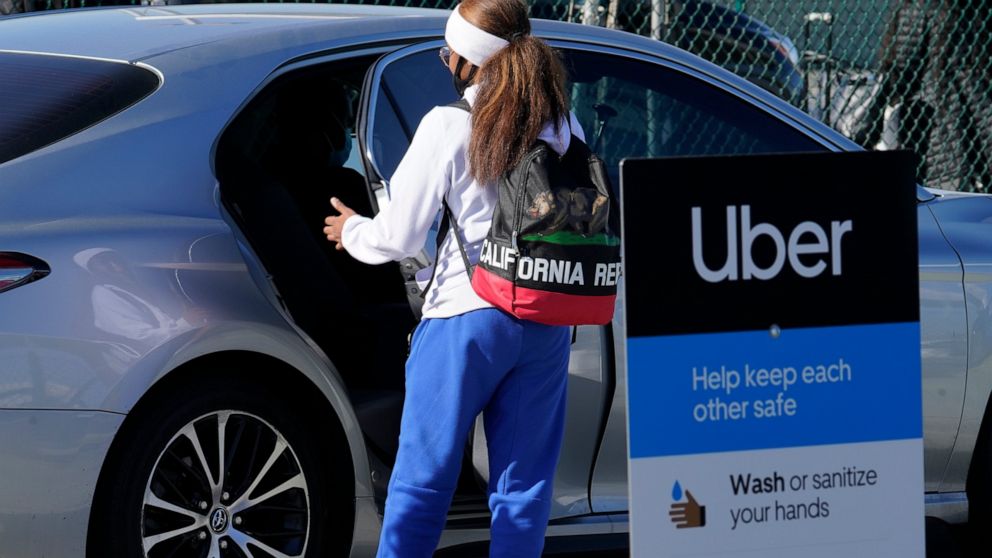Uber demand jumps as delivery grows, ride-hailing recovers
Uber saw record demand in the first quarter as its food delivery business grew and ride-hailing began to see some recovery
Uber saw record demand in the first quarter as its food delivery business grew and ride-hailing began to see some recovery.
The San Francisco-based company said Wednesday that its bookings jumped 24% to $19.5 billion —— an all-time high —— in the January-March period. That was far ahead of the $18 billion Wall Street was anticipating, according to analysts polled by FactSet.
Uber said its delivery bookings rose 166% from the same period last year. Mobility —— or ride-hailing —— bookings were down 38%, and flat compared to the fourth quarter. But ride-hailing demand improved throughout the quarter, and by March ride-hailing demand had reached its highest level in a year, the company said.
Uber said ride-hailing demand improved further in April as the pace of vaccinations increased in the U.S. and lockdowns ended in the United Kingdom. In some markets, including Miami and Hong Kong, ride-hailing demand was higher than 2019 levels.
Uber said demand is increasing faster than its supply of drivers. Last month, the company said it planned to spend $250 million on sign-up bonuses and other incentives to lure drivers.
Rival Lyft also showed signs of post-pandemic recovery in its first-quarter earnings report Tuesday, saying demand outstripped its expectations.
“We’re finally seeing the light at the end of the tunnel,” Uber CEO Dara Khosrowshahi said in a conference call with investors.
One big question for Uber has been whether food-delivery orders will slow down once restaurants fully reopen. So far, that hasn’t happened in markets like Sydney, which fully reopened dining in February. Nelson Chai, Uber’s chief financial officer, said delivery customers do keep ordering, although some less often.
But Chai said it remains difficult to predict exactly what will happen to delivery demand as markets continue to reopen and customers adjust their post-pandemic routines.
In the meantime, Khosrowshahi said Uber Eats continues to add restaurant partners, reaching 700,000 globally during the first quarter. He said the company’s pricing also remains competitive. Last week, rival DoorDash said it would begin offering lower-cost plans to counter criticism from restaurants that delivery fees are too high.
Uber’s first quarter revenue fell 11% to $2.9 billion, partly due to a $600 million charge for back payment of workers in the United Kingdom. After losing a court battle in March, Uber must classify its 70,000 U.K. drivers as its own workers and pay them minimum wages, among other benefits.
Without that charge, Uber reported $3.5 billion in revenue, topping Wall Street’s estimate of $3.27 billion.
The company reported a net loss of $108 million for the period, or 6 cents per share. Analysts had forecast a 56-cent loss.
Uber’s shares fell about 4% in after-hours trading.
![]()


